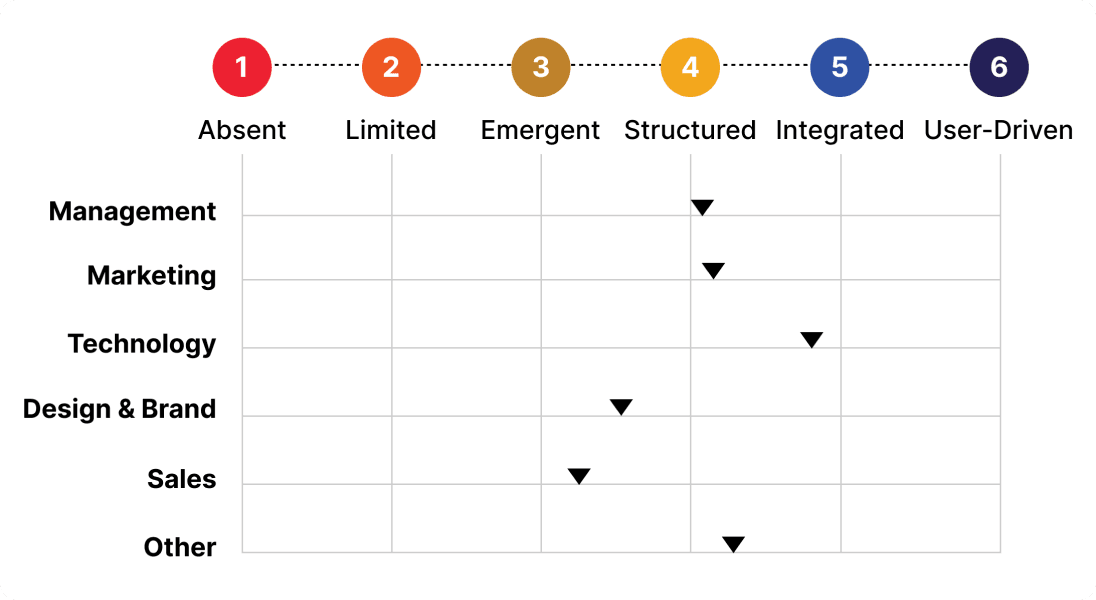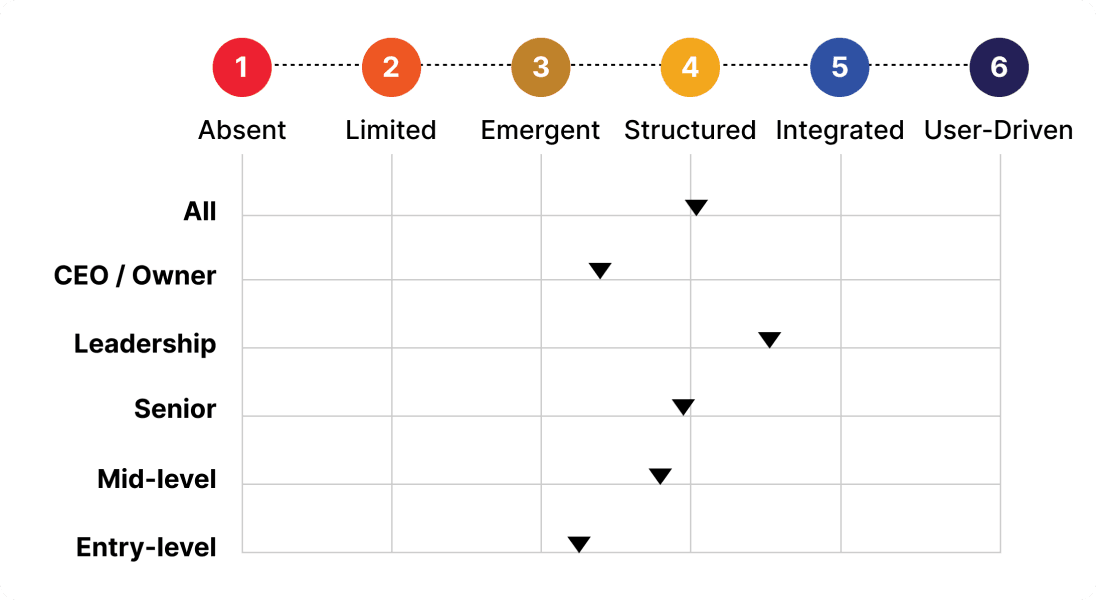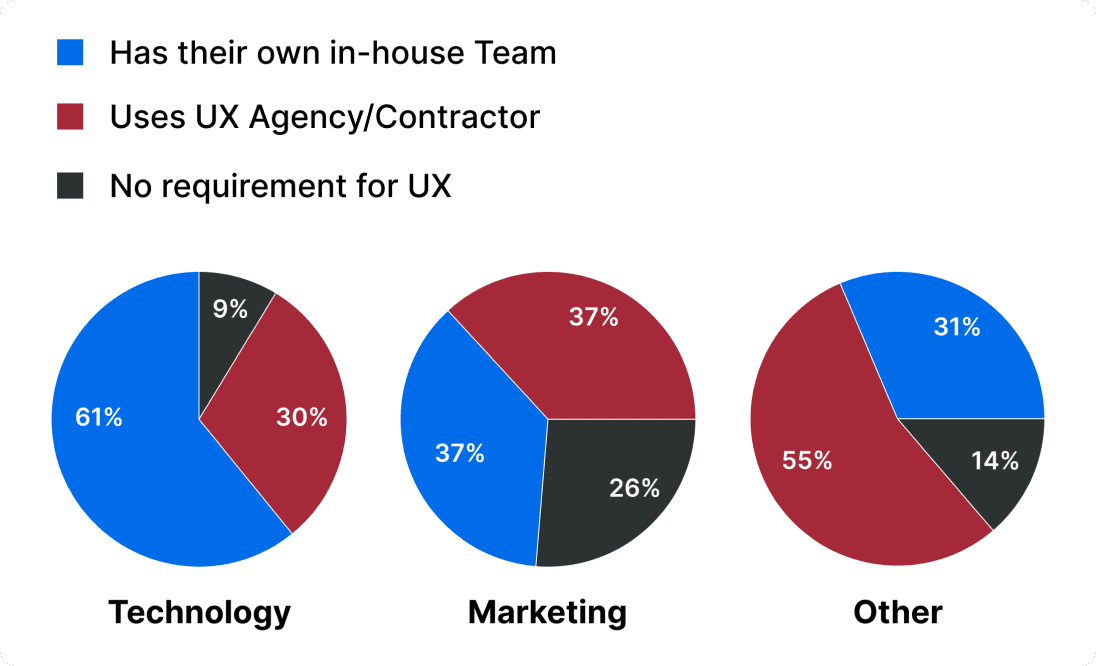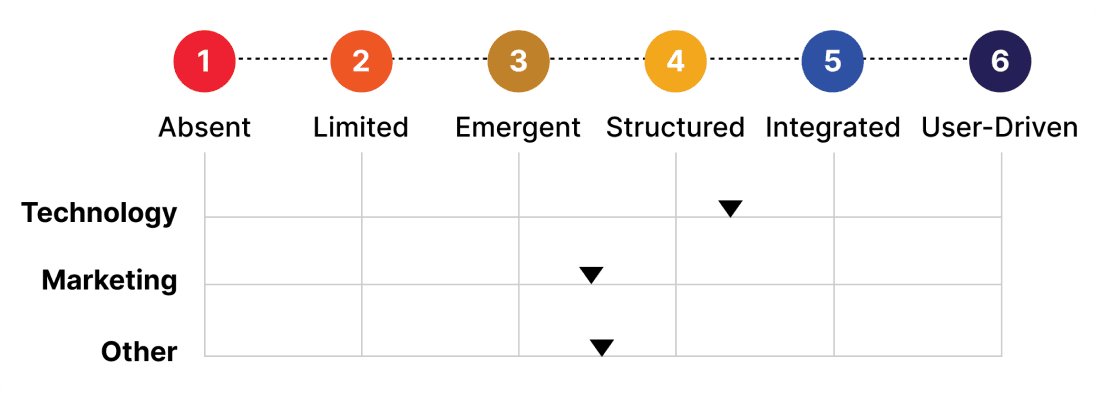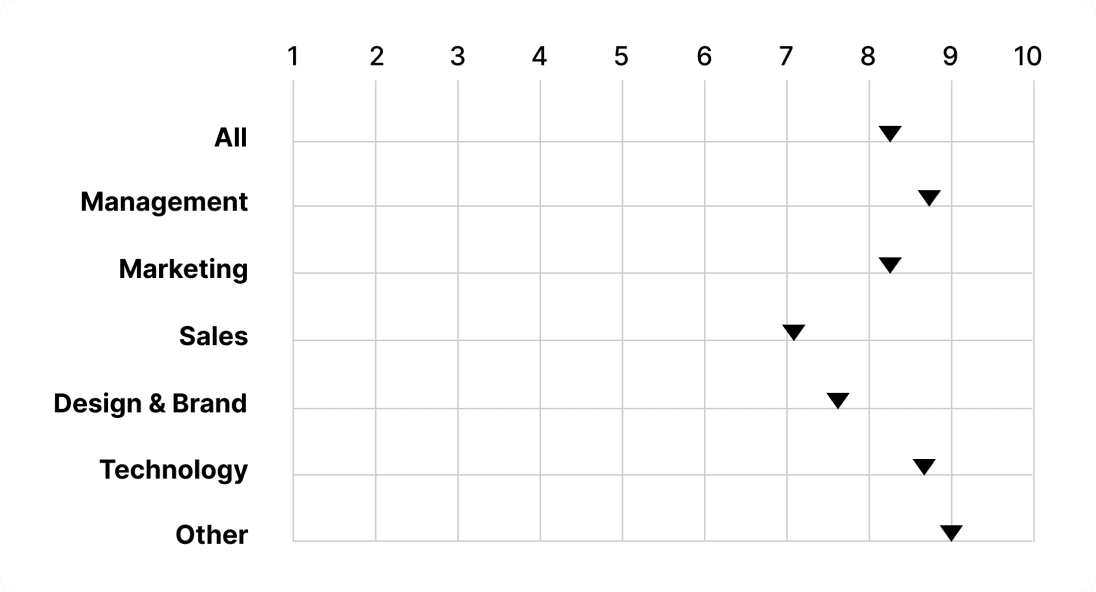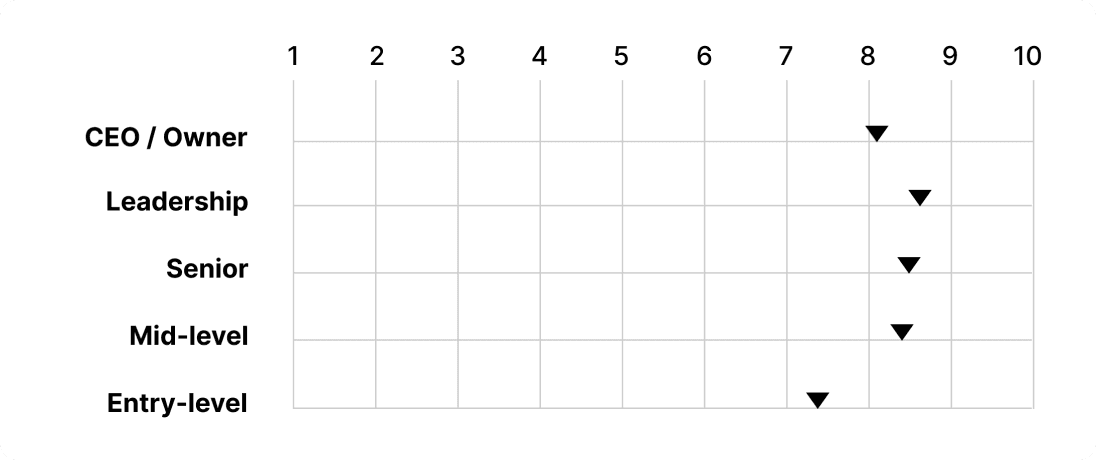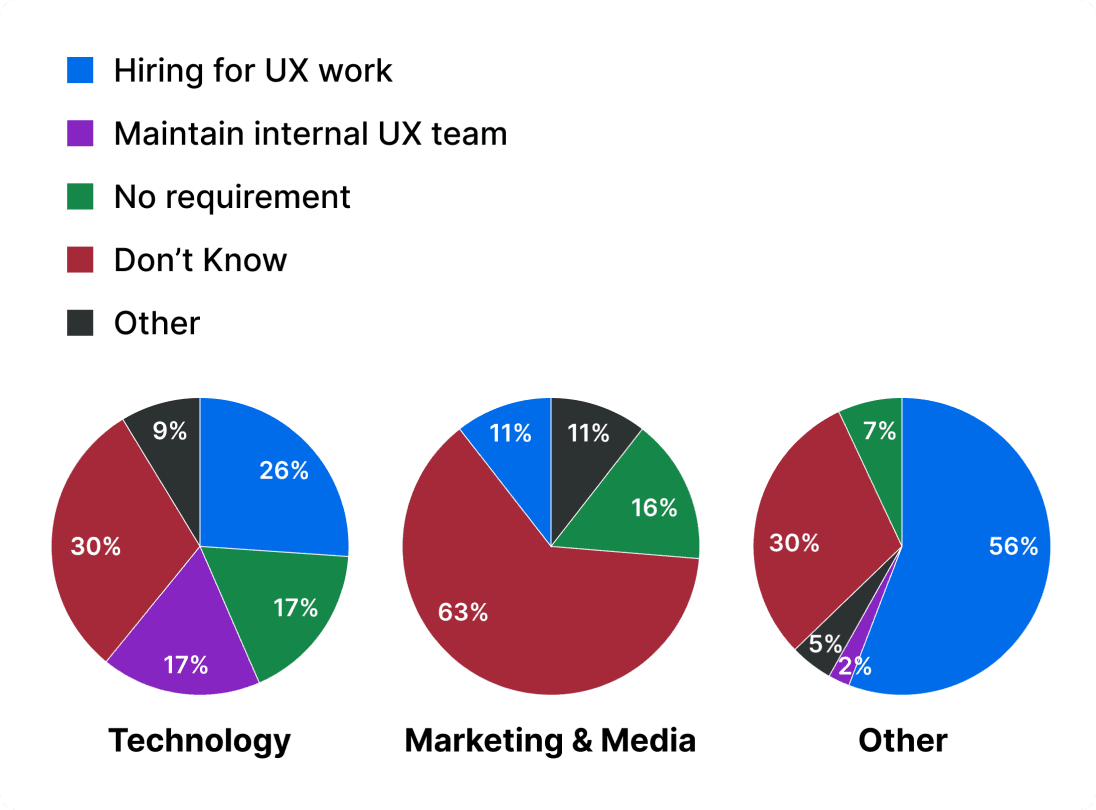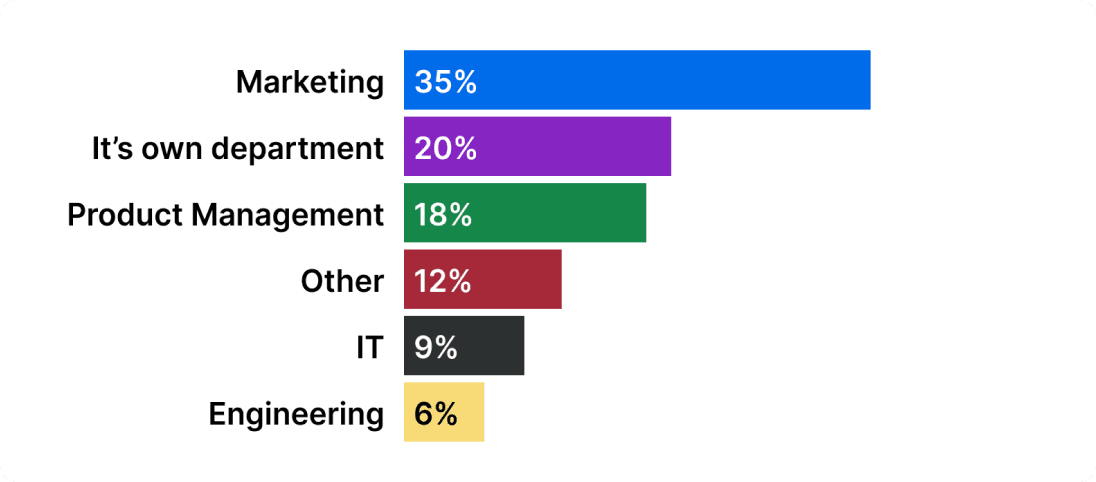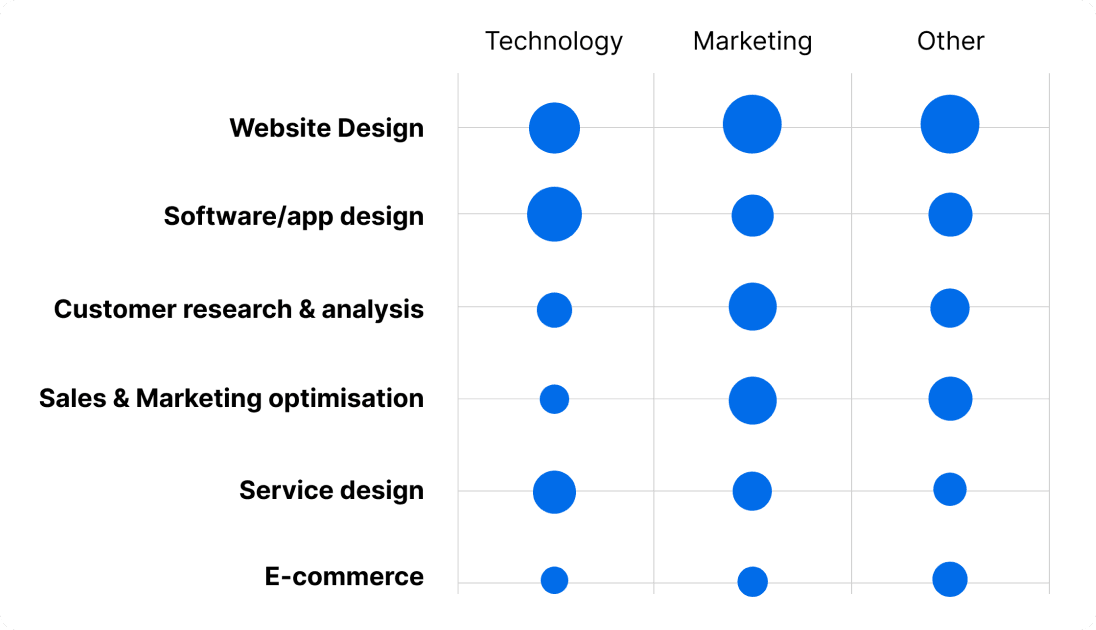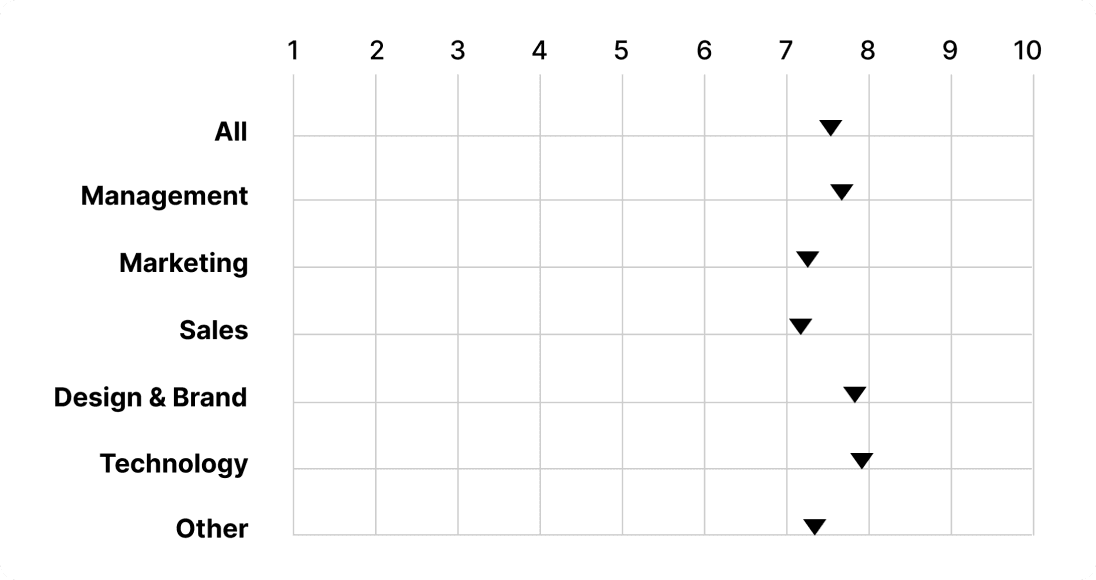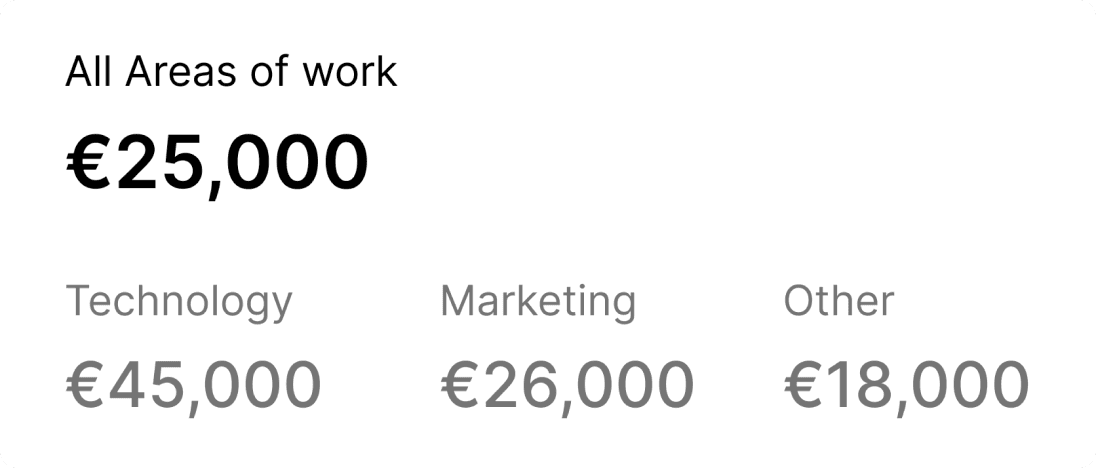Ux in Ireland Report
The State of the Nation 2024

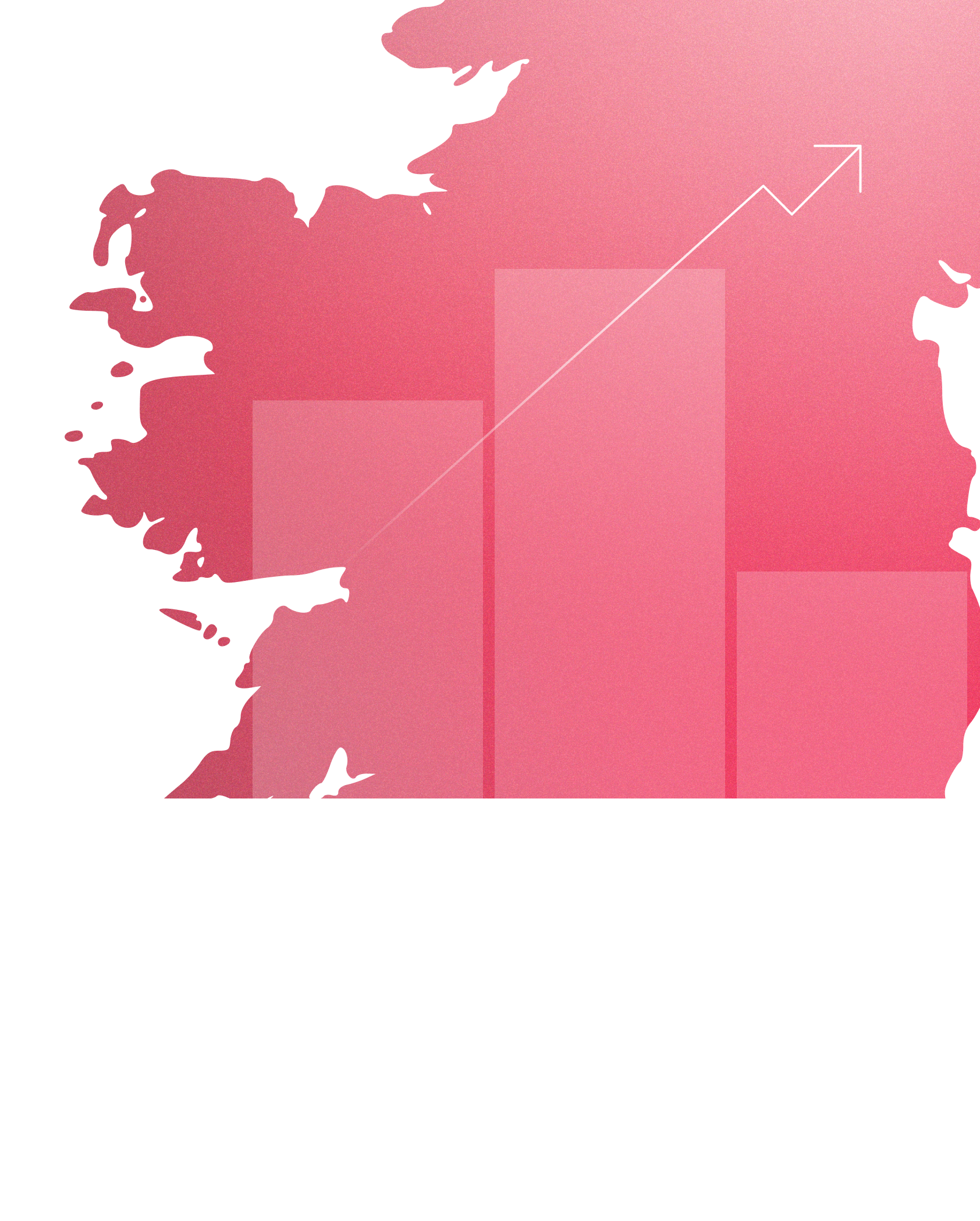
We've compiled insights from over 100 business leaders and practitioners in Ireland, reflecting perspectives that showcase the degree of User Experience Design (UX) maturity within the industries and sectors where UX design plays a role.
UX maturity measures the sophistication in approaching user experience, design, and research. UX impacts brand perception, customer conversion, retention, and overall success. It yields substantial advantages, boosts sales, and reduces operational costs.
We hope to repeat the research every year in order to generate comparative data.
 Dave JacksonFounder and UX Director
Dave JacksonFounder and UX Director Shane BrennanSr. UX Researcher and Designer
Shane BrennanSr. UX Researcher and Designer Karen O’SullivanUX Researcher and Designer
Karen O’SullivanUX Researcher and Designer
The Highlights
As we delve into the intricacies of UX maturity, 4 pivotal aspects emerge.
These aspects shed light on the state of design maturity, across the current business landscape in Ireland.
Mid-High Level of Design Maturity Overall
Accessibility is a Priority
Lower UX Maturity in Leadership
Varied Budget Estimations
The NN/g Model
The Nielson Norman Group's UX-maturity model provides a framework to measure an organisation's desire and ability to successfully deliver user-centred design across 6 maturity levels.
We've used this framework to measure the average level of UX maturity in each industry and job role. Participants self-evaluated their own approach to UX practices, and that of the company they work for.
Stages of UX Maturity

- 1
Absent
- Ignored
- Non-existent
- Undiscovered
- 2
Limited
- Uneven
- Haphazard
- Aspirationa
- 3
Emergent
- Functional and promising
- Inconsistent
- Inefficient
- 4
Structured
- Partly systematic
- Variably effective
- 5
Integrated
- Comprehensive
- Pervasive
- Universal
- 6
User-driven
- Beloved
- Reproducible
- Habitual
Demographics
The survey ran from Oct 3rd - 11th 2023, with 107 responses and 9 from direct UX roles being removed.
Targeting
We specifically targeted participants with the following criteria:
- Senior level role or higher.
- Based in Ireland.
- Industries with potential exposure to UX practices, such as Technology, Marketing, Media, Consumer Goods etc.
- Roles that could have cause to engage directly or indirectly in UX practices, such as Marketing, Design & Brand, Technology, Business Management and Sales.
*Specifically excluded were those working directly in UX, UI or Product roles to avoid skewed or biased results. We are interested in the perception of UX from the outside.
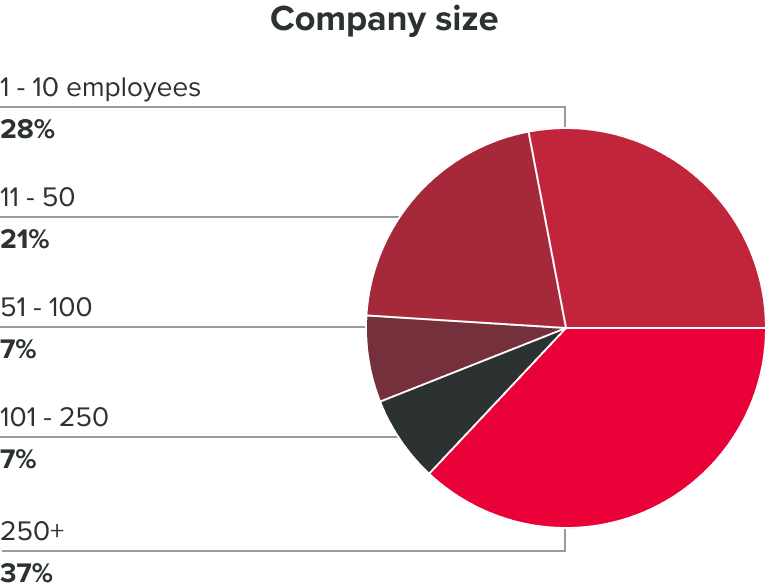
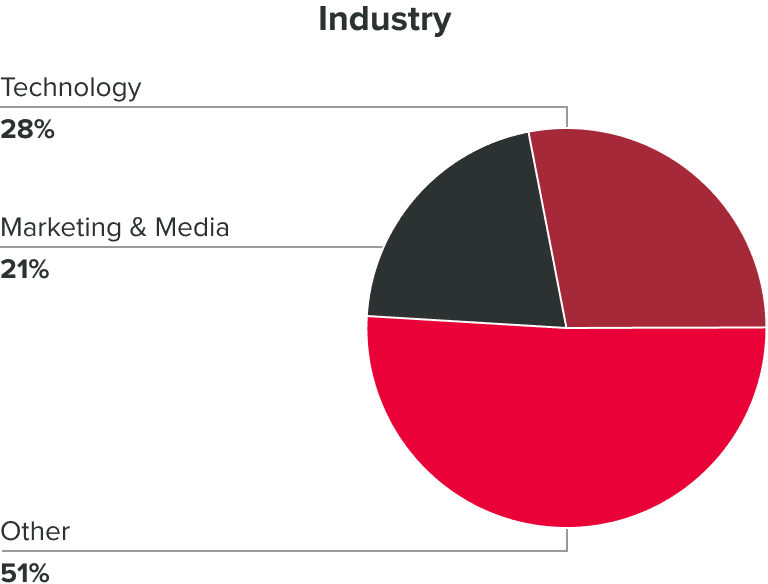
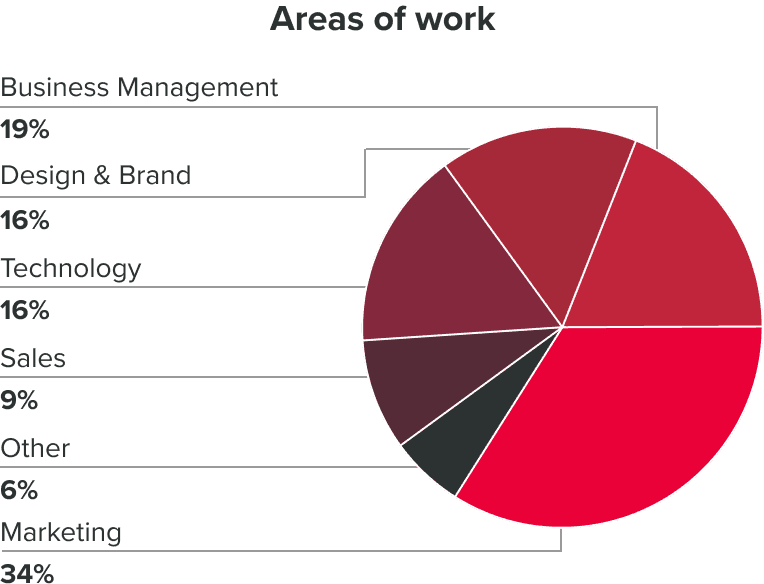
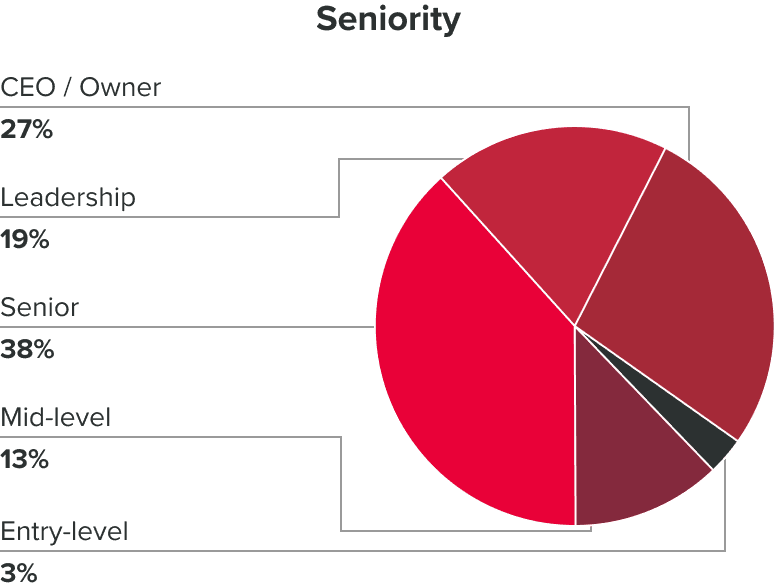
The Results
Understanding of UX
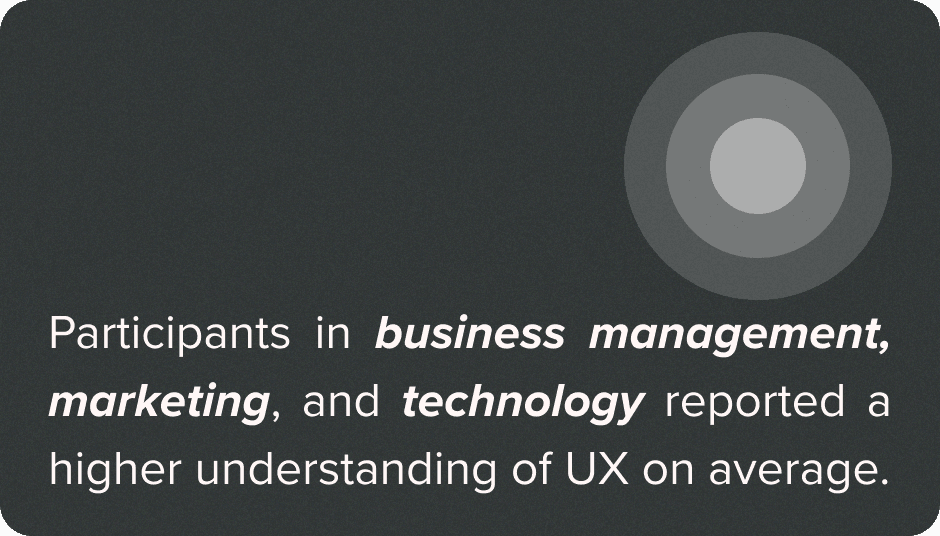
Exposure to UX
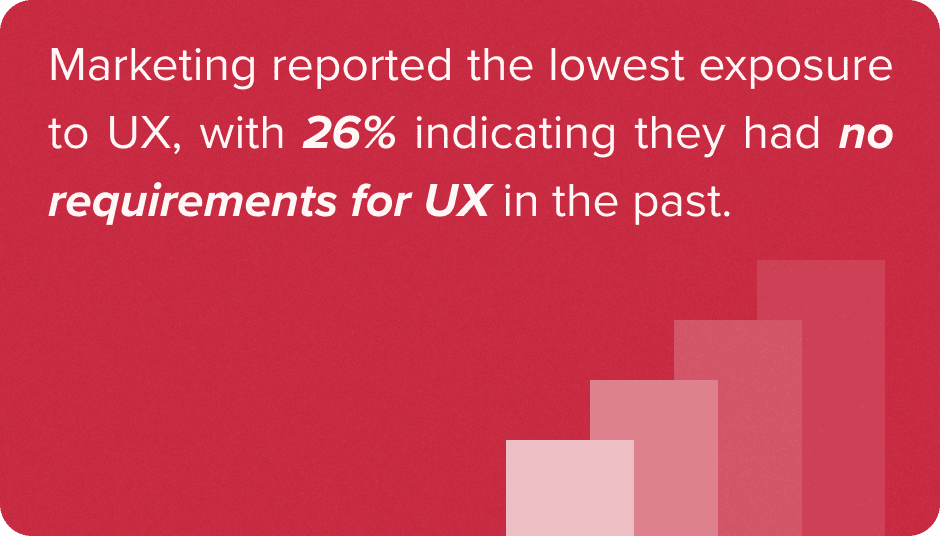
Approach to UX
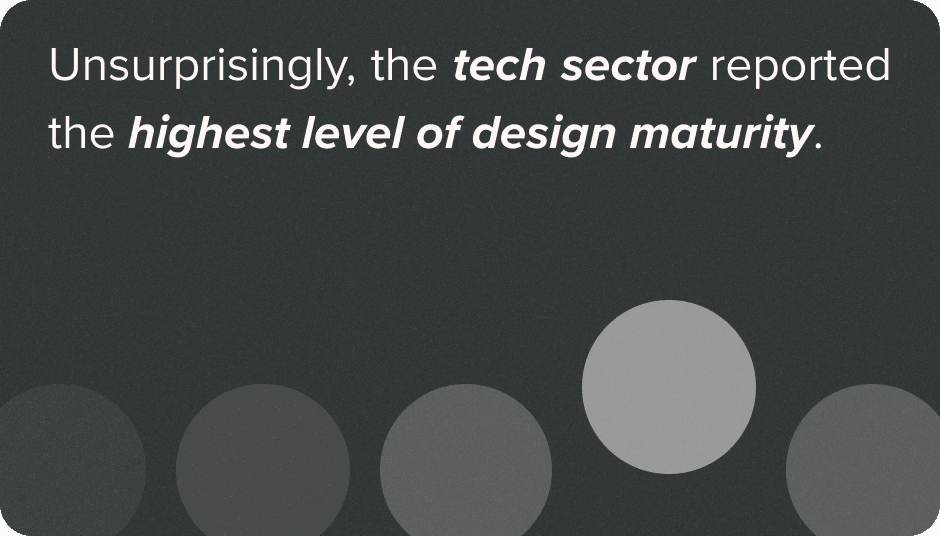
Value of UX
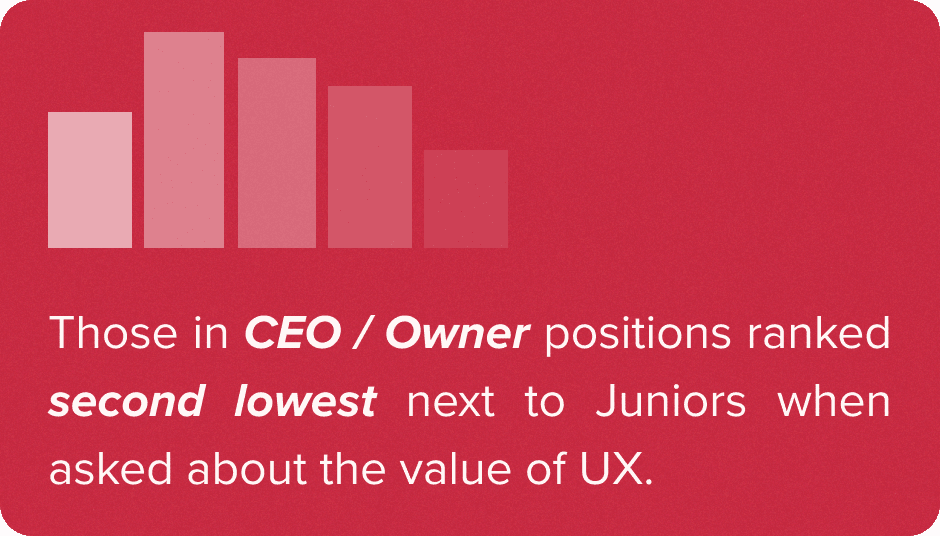
Requirements for the next 12 months
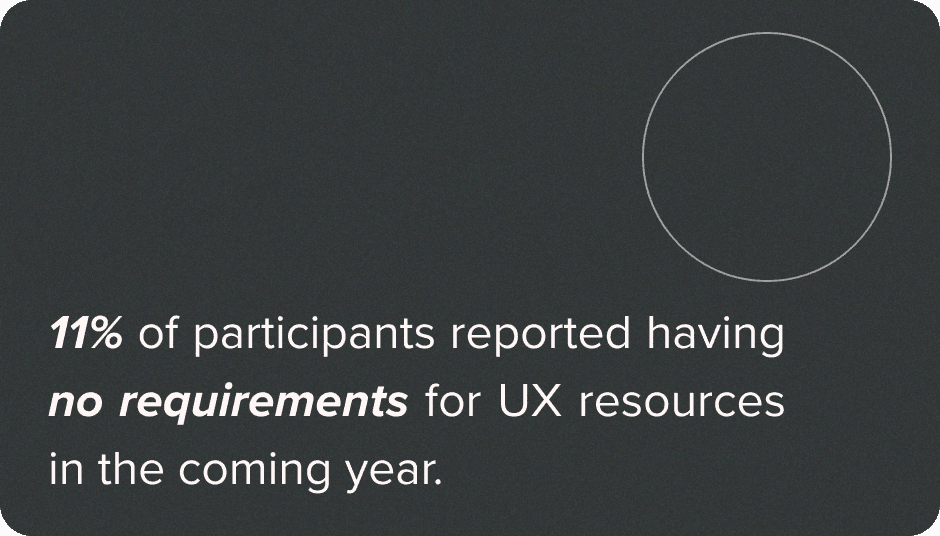
What department would UX fit under?
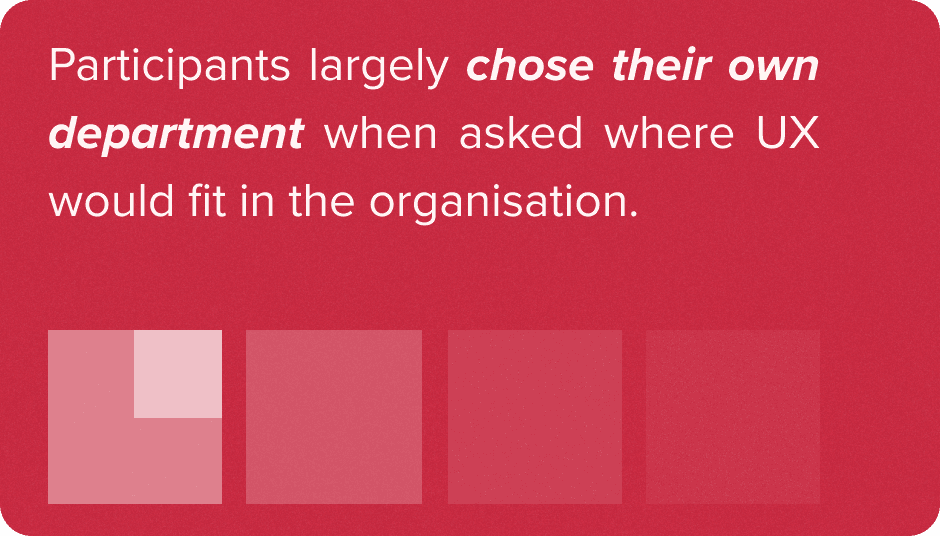
UX Projects
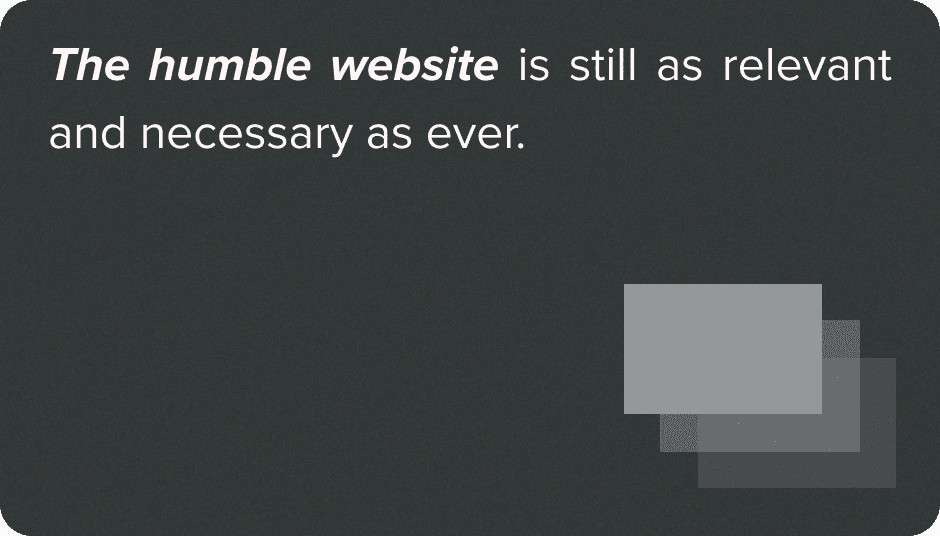
Accessibility
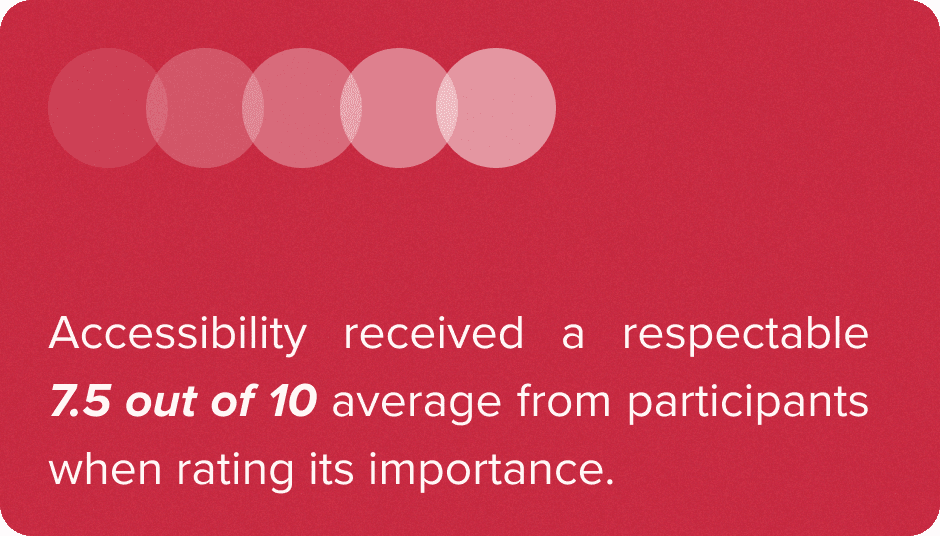
Budget
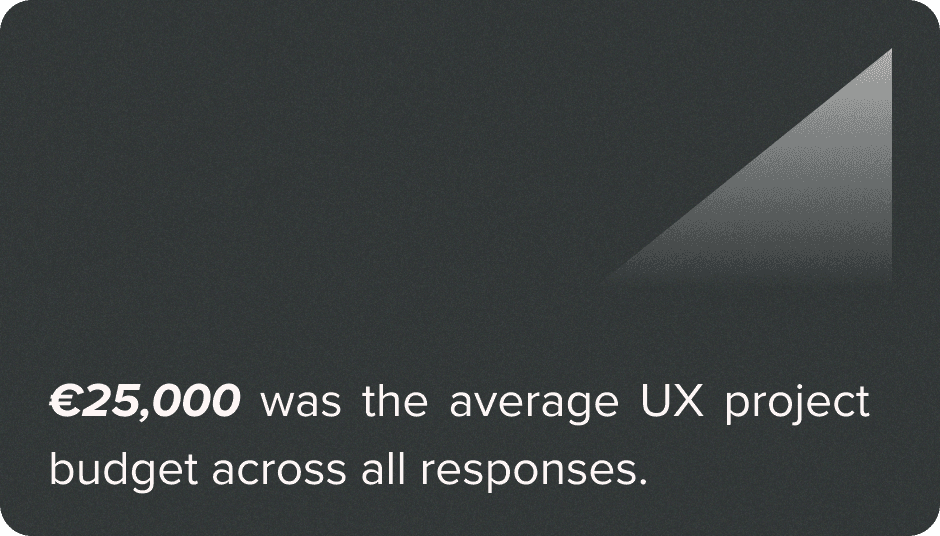
Our Thoughts
Expectations
We were not surprised by the level of UX maturity within the technology sector, but the reported levels of UX maturity outside of technology were significantly higher than we had anticipated.
This data is positive and promising, however, having comparative data after repeating the research next year will provide a good benchmark and some perspective.
Possible Over-Estimation
Participants self-reporting on their knowledge and experience may be influenced by challenges such as lack of objectivity, interpretation variations, and biases related to social desirability, potentially skewing the data. These considerations are important when interpreting and drawing conclusions from the survey results. *From https://www.nngroup.com/articles/state-ux-maturity-quiz/
A fully integrated UX process is a high bar to reach. 14% of respondents reported that they "adopt a fully user-driven strategy” on an individual basis. Similarly at the organisational level, 13% reported that “user-driven processes are applied at all levels,” and another 22% said that “UX work is comprehensive, universal and effective.“
NN/g found 0.04% of 5000 self-reported UX professionals around the world to be at Level 6 - fully user driven.* This could suggest a possible over-confidence in some participants, or perhaps a lack of knowledge in what truly constitutes a fully user-driven and rigorous UX practice.
*From https://www.nngroup.com/articles/state-ux-maturity-quiz/
Areas of Promise
It’s encouraging to see a strong emphasis on the importance of accessibility within organisations. The hope is that this sentiment translates into tangible actions and commitments in the adoption of universal design.
In late 2023 the Government of Ireland released a Roadmap for Embedding Design in the Public Service. This works towards "a proactive, human-centric, and collaborative approach to designing better public services,” while also outlining its own design maturity model. It's a very encouraging development for both public services and the design industry. Something that is sure to raise the bar of design thinking across the country.
Unlocking Potential
UX maturity can only be driven effectively if there is buy-in from the top. While CEOs/business owners reported a relatively low level of UX maturity, others in leadership roles displayed some of the highest levels. This is positive, as these are the people best placed to be UX evangelists.
Encouraging the adoption of UX practices within an organisation involves a combination of education, advocacy, and practical implementation. Stakeholders need to be clear on the benefits to the business, this can be done by demonstrating the return on investment. Only when you have buy-in can you start integrating UX into processes and start creating a true UX culture.
References & Acknowledgments
We'd like to take this opportunity to thank all of our research participants and contributors to this study and to the NN/g Group for providing the UX Maturity Model.
Research, analysis, reporting and design were created in collaboration between Dave Jackson, Shane Brennan and Karen O'Sullivan from Friday Agency. We hope that our findings will help people and organisations take stock and look at how they approach UX going forward.




